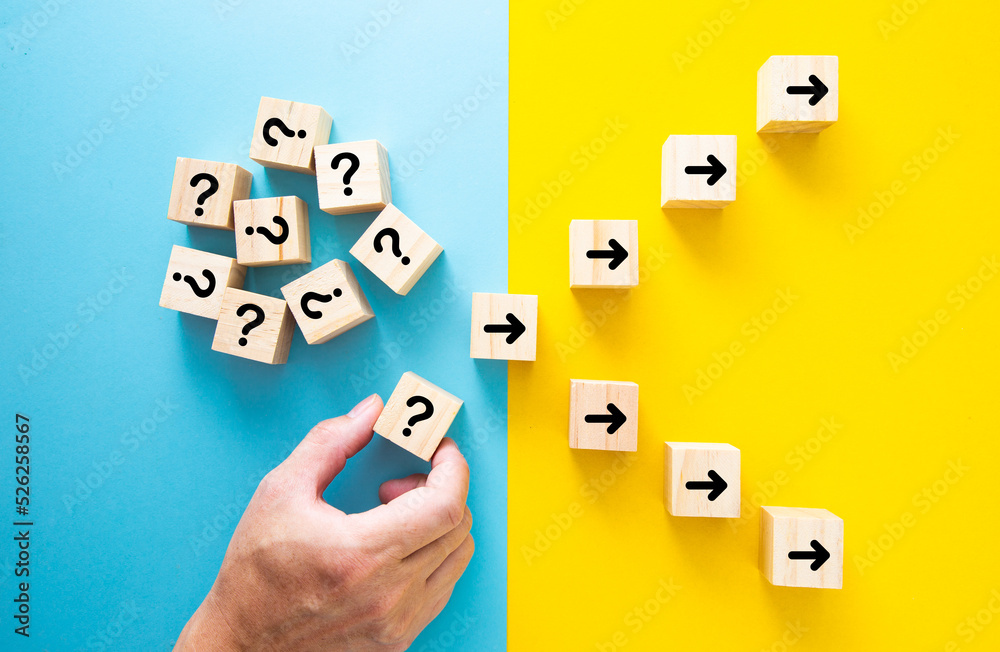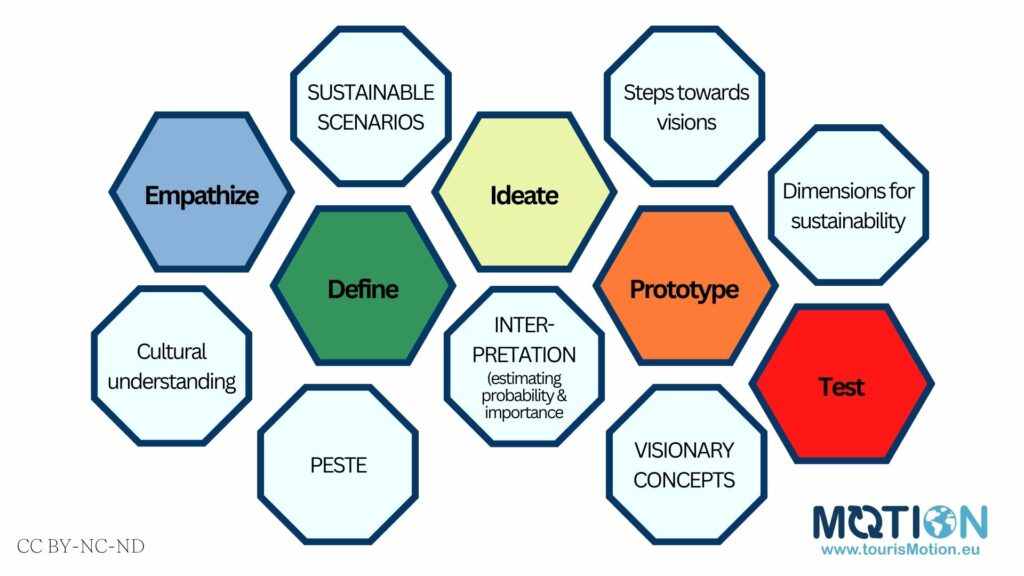Businesses move forward by innovating and creating the products and services that customers want and need.
In the following video (duration 5:44 minutes) and the text on this page you will learn how to develop using futures thinking together with design thinking methods.
Futures thinking is a future-oriented approach to strategy development that identifies signals and trends in order to create alternative futures. Design thinking is a human-centric and solution-based approach to design which seeks to solve existing problems in a creative way. This is achieved by understanding the user and the issue and redefining the problem.
Design thinking is centered on today’s world but offers a practical way to design and innovate. Futures thinking allows us to see possible futures so combining the two approaches will allow for products and services that are both innovative and fit for the future.

Futures thinking methods and tools help to make sense of complex situations, imagine unexpected possibilities, and broaden perspectives to:
- Spot patterns of change, emerging trends
- Focus on the external context within which the business operates
- Develop a narrative of the future, based on evidence.
- Explore multiple versions of the future as there is no one version of the future but multiple possibilities.
Organizations use Futures Thinking to devise strategies and action plans for increasing the probability of the more desired futures. This could be a more sustainable and greener future. They also identify the risks and benefits of different futures in order to innovate and become more resilient.
One useful tool for exploring variables in the environment is a PESTE analysis as forces and weak signals appear in different societal spheres: Political, Economic, Social, Technological and Environmental.
On the other hand, the Design Thinking approach is all about being human-centered, understanding the problem from the user perspective, then challenging assumptions to come up with creative solutions. This helps to inform the design process focusing on the outcome of the product or service so that it is both efficient and pleasurable for the user.
One way of understanding the Design Thinking process is to split it into five stages.
Stage 1: Empathize—Research Your Users’ Needs
Stage 2: Define—State Your Users’ Needs and Problems
Stage 3: Ideate—Challenge Assumptions and Create Ideas
Stage 4: Prototype—Start to Create Solutions
Stage 5: Test—Try Your Solutions Out

In addition to the process and tools, Design Thinking is a philosophy that can be brought into an organization’s culture and applied throughout the business.
We can combine Futures Thinking with Design Thinking to:
- empathize with the user and understand the external environment
- define the problem by taking into account future scenarios and the need for sustainability
- develop ideas which step into the future delivering visionary concepts
- build a prototype of the future solution with steps towards reaching that vision
- test out the concept to ensure it is sustainable
This will produce products and services that meet customers’ future needs as well as businesses that are resilient and responsive.